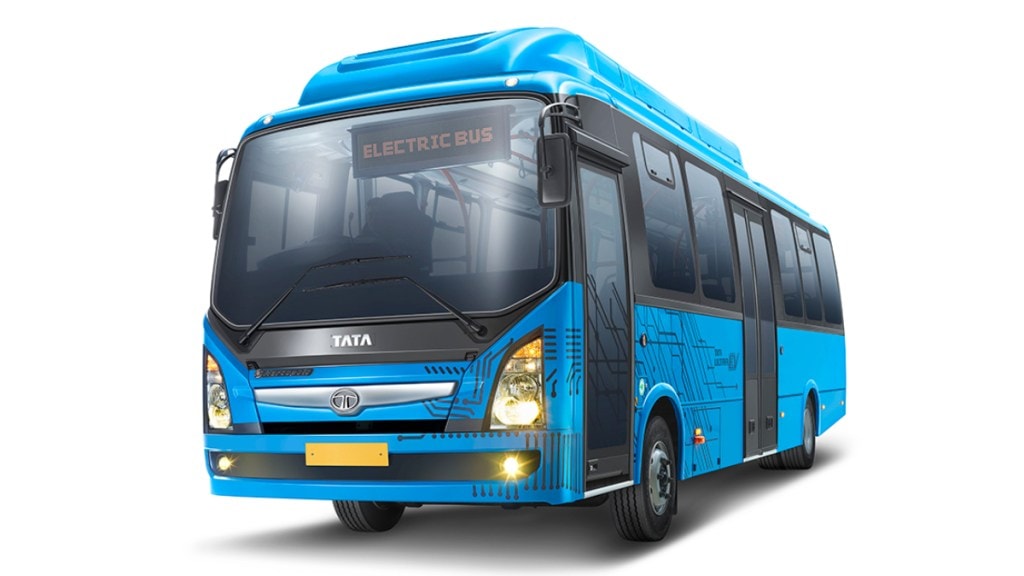Electric buses will be at the forefront of India’s electrification drive with the segment expected to witness healthy traction going forwards expects ICRA.
It estimates that e-buses will account for 11-13 percent of new bus sales by FY2025. The traction in the e-bus segment is already visible over the past couple of years, with e-bus volumes as well as penetration levels improving consistently, to 7 percent in FY2023.
The rating agency says steady progress has been made over this period towards meeting the e-bus deployment targets under the Faster Adoption and Manufacturing of Hybrid and Electric Vehicles (FAME) scheme, and this is likely to gain pace over the coming months, till the scheme expires in March 2024. Additionally, many state electric vehicle (EV) policies have announced specific targets and timelines for e-bus adoption, thereby creating a roadmap for electrification.
Kinjal Shah, VP & Co-Group Head – Corporate Ratings, ICRA said: “Bus cost is the single largest cost element in the e-bus project, accounting for 75-80 percent of the project cost. The capital subsidy of Rs 35-55 lakh per bus under the FAME II scheme can fund a large part of the project costs, up to as much as 40 percent, which augurs well for the viability of these projects. Additionally, coupled with the significant savings on fuel costs (3-5x cheaper vis-a-vis conventional buses), these subsidies help lower the total cost of ownership of e-buses by 10-25 percent compared to conventional CNG or diesel buses.”
Supporting policies to spur growth
ICRA states that in addition to these state policies and government schemes, the government has also sought to spur e-bus adoption through bid aggregation under tenders floated by Convergence Energy Services (CESL). With the enhanced volumes under these tenders due to demand aggregation, there was healthy interest and participation by the OEMs in the first two tenders, even without subsidies on offer in the second tender. However, CESL’s third tender saw limited OEM participation due to lack of a payment security mechanism and a dry lease model of operation proposed for it and had to be subsequently scrapped. Addressing these concerns of the OEMs would be critical to ensure the increased pace of e-bus adoption in the country.
Recently the government of India has announced the PM e-Bus Sewa scheme, which aims to provide 10,000 e-buses to 169 cities under a public-private partnership (PPP) model. With the FAME II scheme expiring in March 2024, such demand aggregation by CESL or under the PM e-Bus Sewa scheme are expected to support the e-bus volumes, as subsidies get gradually phased out.
The gross cost contract (GCC) model, or the OPEX model of operations, has emerged as the preferred route for e-bus adoption in India, especially as the FAME II scheme offers capital subsidy only for buses procured under this route. This helps significantly alleviate the upfront capital burden on the cash-strapped state road transport undertakings (SRTUs), while spurring electrification by increasing private participation in the segment. However, the model is currently evolving.
As per ICRA, while execution-related risks remain relatively low for these projects, operational risks are somewhat higher, given the lack of adequate track record of EVs in the country. Operators with direct backing from the e-bus OEMs, and with adequate financial wherewithal and flexibility, would be better placed to establish a strong foothold in this segment.
“Although NITI Aayog has outlined a Model Concession Agreement for the e-bus projects under the GCC model, keeping in mind the interests of various stakeholders, various risks related to project execution, bus performance and counter-party risk are currently playing out. Nevertheless, as the model matures, e-buses are expected to witness increased adoption going forward, aided by the favourable cost economics. Among the various automotive segments, buses would be among the first ones witnessing faster electrification, especially for intra-city operations. While limited charging infrastructure, range anxiety and high capital costs have been the key deterrents in electrification across segments, these are relatively low for the bus segment,” added Shah.
Future expectations
The e-bus projects executed thus far have seen some time overruns in project execution, even after factoring in extensions provided on account of Covid-19. However, there have not been any penalties on account of the same. While there have been some cost overruns too in the execution phase, these have been largely funded through additional fund infusion by the project sponsors/promoters, either through equity or NCDs, without impacting the project viability adversely.
The operational track record of e-buses deployed so far has been satisfactory, with bus running and fleet availability as per the project requirements, and bus efficiencies in the range of 0.7-1.2 KwHr/km. However, it is critical that the buses are able to maintain this even as the battery deteriorates.
While the government subsidies would support the penetration in initial years, expectations are that capital costs would reduce with localisation and evolution in battery technology, which, coupled with favourable operating economics, would support sales subsequently. At the same time, addressing the OEM concerns related to implementation of payment security mechanism, availability of long-term funding avenues would remain critical to ensuring that the pace of electrification achieved so far is maintained, going forward.



















